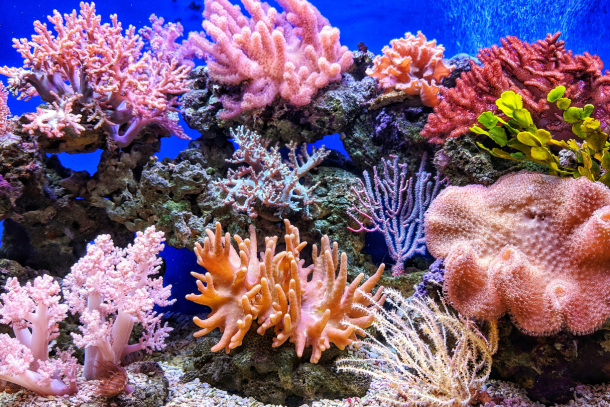Capturing Nature's Essence: A Guide to Photography on Nature Walks
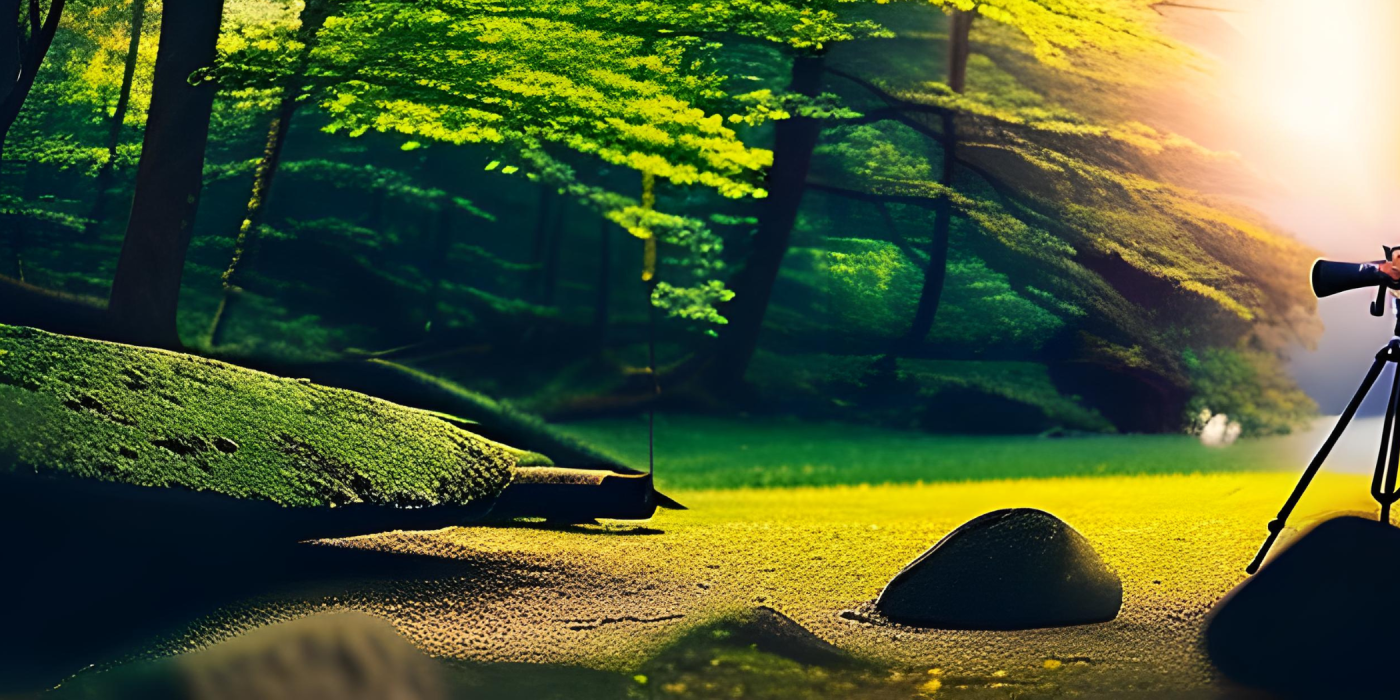
Nature, in all its wondrous splendour, has forever been an intoxicating muse for many a photographer. The call of the wild, the intricate dance of light on leaves, and the serenity of vast landscapes invite the keen observer to capture such moments, preserving them in a freeze-frame of time. Photography, as a medium, offers an unmatched avenue to immortalise these natural moments.
The Perfect Duo: Nature Walks and Photography
Nature walks and photography are a match made in heaven. The rhythmic cadence of footsteps on a forest trail, paired with the eager anticipation of spotting the next perfect shot, creates a rich experience that's unparalleled. As one wanders amidst the greenery, every turn offers a fresh perspective, a new story waiting to be captured through the lens.
Capturing Nature’s Transient Beauty
But what is it about nature that so captivates the photographer's eye? Perhaps it's the fleetingness of it all. The way morning mist dissipates with the rising sun, or how the evening's golden hue lasts but a few minutes. These transient moments, ephemeral yet profound, beckon photographers to seize them, knowing well that no two moments in nature are ever truly replicable.
It is in this harmonious union of the tranquil outdoors and the art of photography that one can truly appreciate the beauty around us. So, the next time you set out on a nature walk, camera in tow, remember: you're not just taking photographs – you're preserving memories of nature's ever-changing canvas.
Choosing the Right Equipment for Nature Walks
Venturing out into the great outdoors offers a plethora of opportunities for photographers, both budding and seasoned. But to capture the true essence of nature, having the right gear is crucial. Let's delve into the equipment best suited for nature photography during your walks.
Camera Types: Picking Your Best Fit
The kind of camera you select plays a pivotal role in determining the quality and versatility of your shots. Here are a few options to consider:
-
DSLR: These cameras are a favourite among many due to their sensor sizes and interchangeable lenses. With a robust build, they're perfect for the rugged outdoors.
-
Mirrorless: Lighter than DSLRs and equally powerful, mirrorless cameras offer great image quality and are becoming increasingly popular among nature photographers.
-
Compact: For those who prefer not to carry heavy equipment during their nature walks, compact cameras, with their ease of use and portability, are an excellent choice.
The Mighty Tripod
Often overlooked, a tripod is an essential piece of kit. It offers stability, crucial for long-exposure shots or capturing the minutiae of nature. Whether you're snapping a cascading waterfall or the delicate petals of a flower, having a sturdy tripod can make a world of difference. When selecting one, consider its weight, stability, and how easy it is to set up.
Understanding Lenses
Your lens choice can drastically alter the outcome of a shot. Wide-angle lenses are perfect for capturing sprawling landscapes, while macro lenses allow you to get up close and personal with nature's tiniest details. Familiarising yourself with different focal lengths will give you the versatility to adapt to various scenarios on your walk.
By equipping yourself appropriately, you not only enhance your nature photography experience but also ensure you're prepared to capture any fleeting moment that nature presents.
Embracing the Golden Hours
The splendour of nature photography finds its most vivid expression during those fleeting moments of dawn and dusk. Known as the 'golden hours', these transient windows of time bathe the landscape in a soft, warm glow, casting ethereal shadows and lending an almost magical quality to images.
Understanding the Magic of the Golden Hours
Every seasoned photographer knows that lighting is paramount. During the golden hours, the sun's position creates a low-angle illumination. This results in elongated shadows, reduced contrast, and a dreamlike atmosphere. Whether it's the fiery oranges of the morning or the soothing purples of the evening, the colours during these hours are unmatched. Nature seems to don a different robe, offering a unique canvas for photographers to paint with their lenses.
Tips for Capturing Nature's Beauty
- Plan Ahead: Make use of apps or almanacs to determine the exact timing of the golden hours in your location.
- Stabilise Your Shot: Even the subtlest movement can result in a blurred image. Use a tripod to ensure crisp shots.
- Play with Angles: Experiment with different angles to capture reflections, elongated shadows, and highlighted features.
- Underexpose: Intentionally underexposing by a stop can make the rich colours pop even more.
- Manual Focus: To maintain sharpness and capture intricate details, opt for manual focus when shooting during these hours.
By truly embracing and understanding the golden hours, photographers stand to elevate their nature shots from the realm of the ordinary to the extraordinary, capturing moments that transcend time.
Composition Techniques in Nature
As any seasoned photographer will attest, a picture's composition plays a pivotal role in its overall impact. When immersed in the beauty of nature, applying a few time-honoured compositional techniques can transform an average shot into a captivating visual tale.
The Rule of Thirds in Nature
Divide your frame into nine equal parts, forming a grid of two horizontal and two vertical lines. This principle suggests that subjects or key elements in your photograph should be positioned along these lines or at their intersections. In a nature setting, this might mean aligning a horizon line with one of the horizontal grid lines or placing a striking tree at an intersection point. This approach offers balance and draws the viewer's eye more naturally across the image.
Leading Lines to Guide the Eye
Nature provides an abundance of organic leading lines: winding rivers, footpaths, or even the outstretched boughs of trees. By incorporating these into your composition, you create a pathway for the viewer's eye, guiding them deeper into the scene or towards a focal point. Whether it's a serpentine stream leading to a distant mountain or a row of trees drawing attention to a sunset, nature's lines are a tool waiting to be utilised.
Framing Your Shots with Nature's Bounty
Framing involves using natural elements to focus attention on a particular subject. For instance, shooting through an archway of intertwined branches can highlight a distant landscape, or using the curve of a hill to encapsulate a solitary tree can add depth and drama.
In conclusion, harnessing the very elements of nature to enhance your composition not only refines your photographic technique but also deepens your connection to the environment you're capturing.
Close-ups and Macro Photography
Delving into the world of macro photography is akin to entering a hidden realm within nature. It's here that you discover the intricate details of the natural world often overlooked in our everyday encounters. From the delicate veins of a leaf to the complex textures of an insect's exoskeleton, macro photography invites you to see the world through a magnified lens.
Techniques for Capturing Nature's Minute Details
Macro photography requires a combination of technical know-how and an artist's eye. The most vital tool is, of course, the macro lens, specifically designed to focus sharply on close-up subjects.
- Focus Stacking: Due to the shallow depth of field in macro shots, focus stacking – taking multiple images at different focus distances and combining them – ensures the entire subject is in focus.
- Use of Tripod: Given the close proximity to the subject, even minor movements can blur the shot. A sturdy tripod becomes indispensable.
- Natural Lighting: While flash can be used, natural lighting often yields the most authentic results. It's about waiting for the right moment and sometimes even using reflectors to direct sunlight.
Capturing Flora, Insects, and More
- Approaching Insects: Move slowly to avoid startling them. Patience is essential.
- Background Matters: A clutter-free background makes your subject stand out. Seek out contrasting or complementary backgrounds.
- Depth and Perspective: Try shooting from different angles. An ant's view, looking upwards, can offer a fresh perspective on common subjects like flowers.
By immersing oneself in the world of macro photography, nature enthusiasts and photographers alike are offered a unique chance to deepen their appreciation for the minute wonders that abound in our natural world.
Landscape Photography on Nature Walks
The British countryside, with its rolling hills, rugged coastlines, and serene woodlands, offers a picturesque canvas that beckons the lens of every photographer. Venturing on a nature walk, one is often presented with vast landscapes that tell tales of time, seasons, and the ever-evolving dance between light and shadow. Capturing these grand vistas requires a blend of the right equipment and a nuanced understanding of techniques.
Utilising Wide-Angle Lenses
One of the first choices to make when setting out to capture landscapes is lens selection. Wide-angle lenses, typically those with a focal length between 10mm to 35mm, are favoured by many landscape photographers. These lenses allow you to encompass a larger portion of the scene, giving viewers a sense of breadth and grandeur. Their inherent ability to exaggerate perspectives can be used creatively, making foreground elements appear more pronounced, thus adding depth to the photograph.
The Magic of Filters
Filters, often overlooked by amateur photographers, can drastically elevate a landscape shot. A polarising filter, for instance, can enhance the blues of the sky, cut out reflections, and give clarity to water bodies. Graduated neutral density (ND) filters, on the other hand, can balance out exposures between bright skies and shadowed land, ensuring a more evenly lit photograph.
Understanding Depth of Field
In landscape photography, depth of field (DOF) plays a pivotal role. A deep DOF ensures that both the foreground and background elements remain in sharp focus. This can be achieved by using a smaller aperture (higher f-number) on your camera. However, balancing this with the available light and maintaining sharpness requires practice and sometimes a combination of techniques, including focus stacking.
Embarking on your nature walk with these tools and techniques at hand will certainly enhance your landscape photography experience, turning each walk into an exploration of both the outer world and your inner artistic vision.
Wildlife Encounters: Ethical Considerations
When venturing out into nature's domain, particularly with a camera in tow, it's crucial to tread lightly and respect the inhabitants of the wild. As passionate photographers, we hold a responsibility to capture the beauty of wildlife without causing harm or distress.
Respecting Wildlife and Their Habitat
Our pursuit for the perfect shot must never compromise the well-being of the animals we photograph. Adhere to the following principles:
- Maintain a Respectable Distance: Using a telephoto lens allows for close-up shots without physically getting too close. This ensures that the animal isn't startled or feels threatened.
- Avoid Luring or Baiting: Attracting animals with food or sounds can disrupt their natural behaviour and dietary patterns.
- Tread Lightly: Stick to paths or designated areas to minimise disturbance to habitats. Leave no trace of your visit.
Equip Yourself for Ethical Photography
Selecting the right equipment can make a significant difference:
- Telephoto Lenses: These lenses allow for close-up shots from a distance. A lens with a focal length of 200mm or greater is ideal for wildlife.
- Tripods or Monopods: Stabilise your camera for sharp shots without having to approach the subject closely.
- Hide or Blind: A camouflaged shelter that conceals the photographer can be used to observe and photograph animals without causing disturbance.
In conclusion, ethical wildlife photography isn't just about getting the perfect shot; it's about preserving the natural behaviour and well-being of the subjects we so admire. By equipping ourselves correctly and approaching the craft with respect and sensitivity, we can ensure our presence is barely felt in these wild spaces.
Dealing with the Elements: Weather and Lighting
Nature's unpredictability is part of its charm. One minute, the skies may be a radiant shade of blue, and the next, storm clouds may roll in. For the passionate photographer, these shifts aren't setbacks but opportunities. In this section, we’ll delve into how to harness various weather conditions and lighting scenarios for compelling photographs.
Shooting in Varied Conditions
Rain:
Rain brings with it a freshness that can be captivating in photos. Glistening leaves, reflective puddles, and raindrop trails can all make for magical shots. Keep a waterproof cover handy for your camera and perhaps an umbrella to shield yourself. Remember, the period just after a rain shower, with its diffused light and saturated colours, can be particularly mesmerising.
Snow:
Snow transforms landscapes into winter wonderlands. To capture its pristine beauty, it's essential to adjust your camera's white balance to prevent images from appearing too blue. Furthermore, bright snow can be tricky, so you might need to overexpose slightly to ensure the snow appears white and not grey.
Fog:
Fog offers a mystical, ethereal quality to scenes. It's an excellent opportunity for capturing moody and atmospheric shots. Manual focus may become your best friend in dense fog, as autofocus can sometimes struggle.
Bright Sunlight:
Harsh midday sun can create overexposed images with heavy shadows. Consider using a polarising filter to reduce glare and deepen blue skies. Additionally, seek out shaded areas or utilise the sun as a backlight for more artistic shots.
Protecting Your Equipment
While capturing the beauty of various weather conditions, ensuring your camera's safety is paramount. Invest in a robust camera bag with water-resistant features. Silica gel packs can be invaluable for absorbing moisture, and a lens hood will not only protect against sun flare but can also shield your lens from raindrops.
By embracing Mother Nature in all her moods and being prepared, your photography can flourish in any setting.
Post-Processing: Enhancing Your Nature Shots
As you return from your invigorating nature walk, your memory card brimming with captured moments, the journey isn't quite over. Post-processing, the digital darkroom of the modern photographer, offers the opportunity to elevate your nature shots to a new level of visual excellence.
The Digital Darkroom: Introduction to Editing Software
Just as the traditional darkroom was where photographers breathed life into their film-based images, the digital darkroom is where today's photographers harness technology to enhance their digital captures. Popular editing software like Adobe Lightroom and Photoshop offers an array of tools to refine, enhance, and create.
Crafting Vibrancy: Adjusting Exposure, Contrast, and Saturation
In nature photography, the right balance of exposure, contrast, and saturation can transform an ordinary image into a breathtaking masterpiece. Exposure adjustments breathe life into shadowy groves and brilliantly lit skies. Contrast adjustments accentuate the texture of tree barks and the ripples on water surfaces. Saturation tweaks bring forth the lush greens of foliage and the vibrant hues of blooming flowers.
Fine-Tuning for Perfection
Beyond these fundamental adjustments, the world of post-processing opens doors to further refining your shots. Graduated filters can enhance skies, while radial filters can draw focus to your subject. Sharpening tools bring out the intricate details in every petal and leaf. And if needed, cloning and healing tools can discreetly remove distractions that slipped through the lens.
Preserving Authenticity
However, it's crucial to maintain a delicate balance during post-processing. While enhancements can elevate your image, over-editing can strip it of its authenticity. Nature's beauty lies in its imperfections as much as its grandeur. Preserving the genuine essence of the scene is an art in itself.
A Journey Beyond the Lens
In conclusion, post-processing is a continuation of your artistic journey. It's where you refine the raw captures into a visual narrative that resonates with your vision. Remember that every edit should enhance the inherent charm of your nature shots, inviting viewers to experience the same awe and wonder you felt during your walk.
Conclusion
Amidst the tranquil rustling of leaves and the symphony of nature, there lies a world waiting to be captured—one frame at a time. The sheer joy of preserving nature's fleeting beauty in a photograph is a testament to the harmonious relationship between art and the great outdoors.
Unveiling Nature's Beauty Through the Lens
Each snapshot taken on a nature walk is more than just an image; it's a portal to a moment frozen in time. The dance of light on dew-kissed petals, the embrace of shadows under a setting sun, and the candid elegance of wildlife—it's as if every photograph has its own story, waiting to be unravelled.
A Call to Capture
With camera in hand and tripod at the ready, readers are invited to embark on a journey of visual storytelling. Nature's canvas is vast and ever-changing, offering a wealth of vistas, details, and emotions waiting to be framed. It's not just about the technicalities of shutter speeds and apertures; it's about seizing the essence of the moment, and preserving it for posterity.
So, as you lace up your hiking boots or wander through a sun-dappled glade, remember that nature photography isn't just about snapping pictures; it's about capturing the very spirit of the landscape. And as you embark on your visual odyssey, let the tranquillity and splendour of nature infuse each image with its magic.
Related to this article are the following:
I do hope you have enjoyed this article and hope that you will subscribe to my newsletter so you can get the latest information about all things naturally relaxing.
Stay in touch, join the Naturally Relaxing Newsletter
Newsletter Signup
Post Your Comments
or post as a guest
Be the first to comment.
Latest articles in Nature
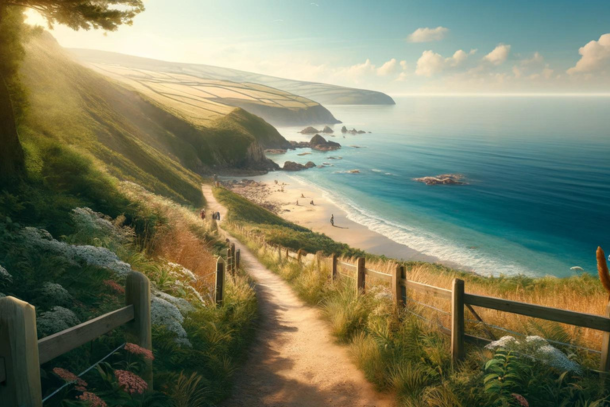
Exploring the UK’s Most Serene Coastal Trails
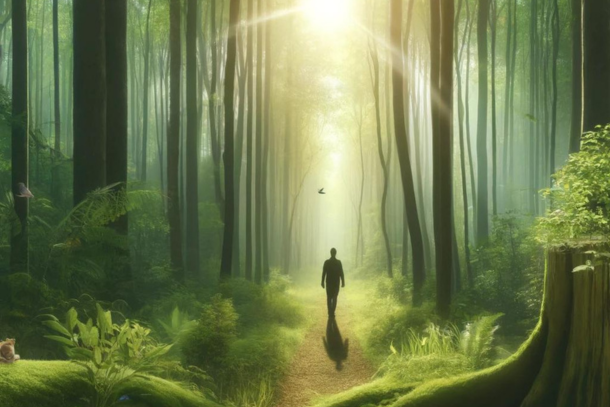
The Healing Power of Nature: Forest Bathing Explained

Sustainable Gardening: Tips for Growing Your Own Herbs
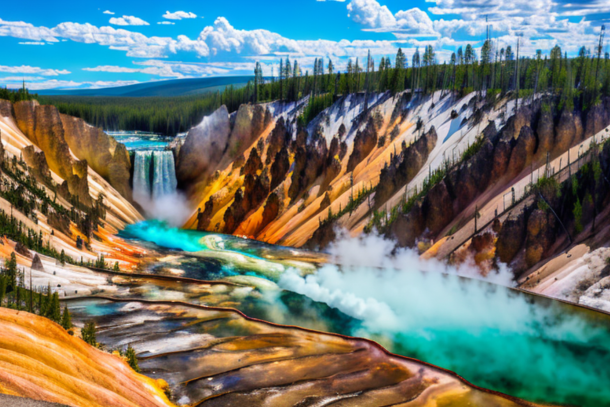
The Yellowstone Supervolcano: A Sleeping Giant

The Lost City of Atlantis: A Geological Mystery
